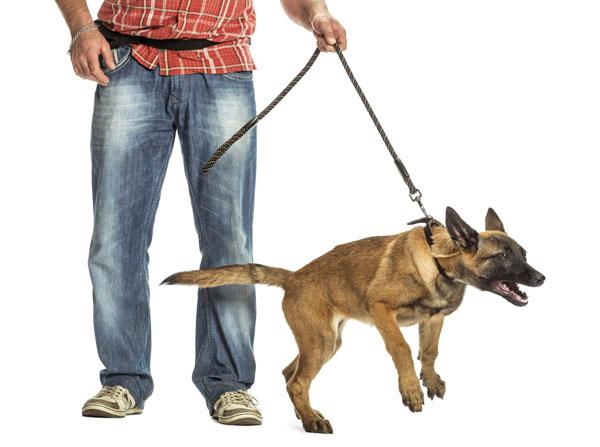
simple causes of serious problems are easily overlooked
Today is a great day because I managed to help one dog with a caring, but unaware, dog lover who had put a prong collar on his one-year-old dog. He was completely unaware that collar injuries can cause a lot of damage.
The reason is that most people (including veterinarians) don’t consider collars to be a problem, and that as it often happens in life, the simplest causes of serious problems can easily be overlooked.
Prong, choke, and even regular collars frequently cause neck injuries, front leg lameness, hypothyroidism, laryngeal paralysis, and a decline in general health and organ disease.
Let me explain why.
The neck is vital to your dog’s health because it is in charge of the nerve, blood, and energy flow supplied to the muscles and organs, and it also connects the brain with the rest of the body.
A healthy neck is the key to proper sympathetic and parasympathetic nerve function, as even seemingly minor undetected neck injuries, muscle inflammation or tightness can lead to heart, kidney, lung and digestive tract disease.
Why? Because the parasympathetic nerve governs and influences their function.
One other important reason to switch to a properly fitted harness is to protect your dog’s thyroid gland, as it is located at the front of the throat. A collar on a pulling dog presses exactly on the dog’s thyroid gland.
There are many dogs that pull while on leash, and also countless trainers who suggest “jerky” leash corrections.
When unforgiving leashes are added to the mix, a traumatized thyroid gland becomes inflamed. The inflammation is detected by the immune system that is programmed to remove inflamed cells which eventually leads to thyroid tissue destruction, and hypothyroidism.
Without the thyroid hormone, your dog’s cells cannot burn oxygen or breathe properly which leads to further disease and dysfunction.
The reason why most hypothyroid dogs happen to be larger is that they are much stronger when pulling, and therefore cause more severe trauma to their neck. One must also beware of collars that are too tight; you should be able to easily get at least two fingers under the collar.
I try not to use the word ‘hate’ very often, but I won’t hold back when it comes to collars that are attached to a leash.
I hate leashes attached to collars!
I have nothing against putting a loose collar on your dog for ID purposes, or even for fashion, but the leash/collar combo makes no sense in light of the serious health problems that stem from it.
Neck injuries often go undetected because we veterinarians are not taught about the risk of collars causing neck injuries while in school.
It is no surprise that most people I speak with have never heard about how dog collar and leash injuries lead to disease.
It is crazy to know that some of the most stubborn medical problems can easily be corrected by simply switching dogs over from collars to harnesses.
This is why I can’t help myself and often talk to people about this while out on dog walks, because hearing about the unnecessary heartbreak and endless veterinary bills is difficult.
Sometimes people respond by saying that their dogs do not pull very often, but it only takes one wrong pull or slip to cause a severe injury. The same way it takes just one car accident without being buckled-up to suffer severe injuries.
This is why I say that using a gentle, shock absorbing leash with a harness such as the Perfect Fit Harness is similar to using a seatbelt, as they both save lives.
The retractable leash – another big problem.
At first glance they may appear to be the solution to restrictive leash laws by giving dogs more freedom; however, when a dog reaches the end of the line or the break button is used, shocks to the neck are bound to happen.
If anyone is in doubt, I suggest they perform a simple experiment.
Place a dog collar on your neck, attach a retractable leash to it, ask a friend to hold firmly on to the handle and run.
The moment you reach the end, you will know why you should stop using retractable leashes. It hurts and our dogs have no way to say “STOP IT!”
It took me years to solve the problem of retractable leashes, and it wasn’t until I found Dawn MacKechnie who has made, in my opinion, the best and gentlest leash available, the Gentle Leash.
The search for a good harness was equally challenging, but successful in the end.
The Gentle Leash and Perfect Fit Harness combo are the only restraints that I use on my dog Pax and recommend.
Collars are still okay for attaching your dog’s ID or tracker, but I do not recommend attaching a collar to a leash.
I trust that this was enough information to encourage you to make the switch. ❤️
To learn more about the health benefits of the Perfect Fit Harness check out the video below to watch an interview I did with Stephanie Chamings, a dog trainer at Dog Games — the company who manufactures the harness.

